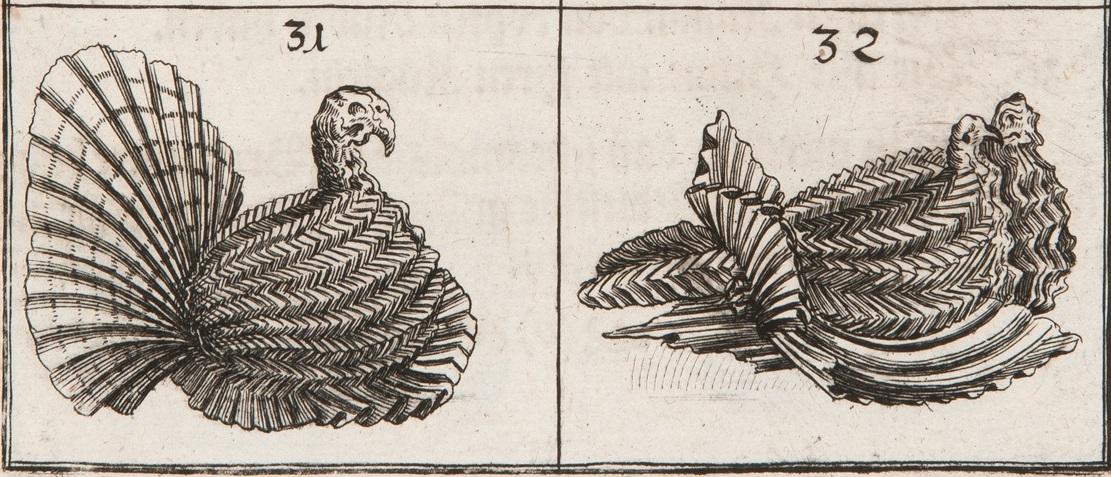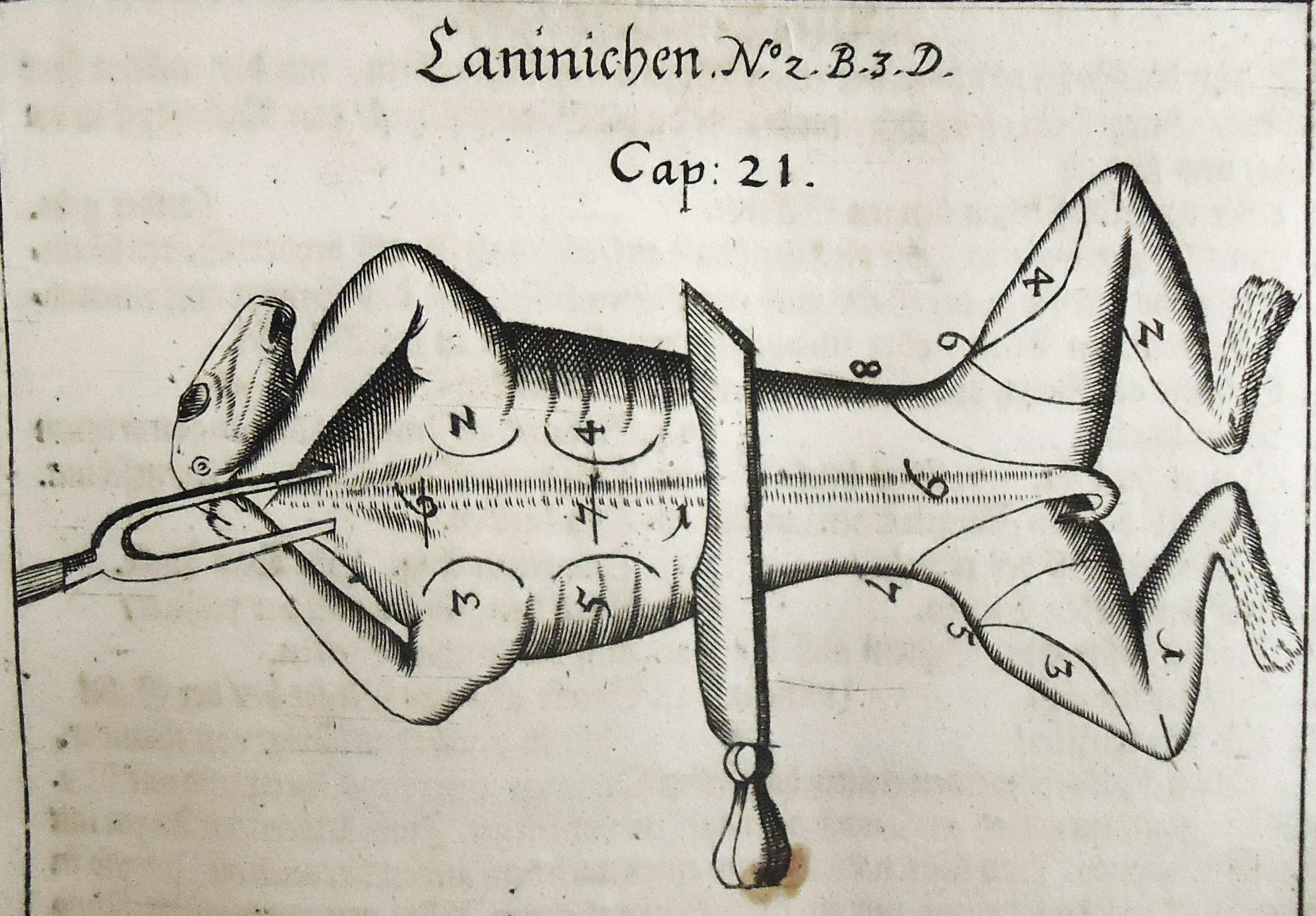Have you ever worried that you’re carving the Sunday roast the wrong way? Concerned that your table settings lack a certain pizzazz? Fear not! The 17th-century answer to Delia Smith and Martha Stewart all rolled into one is here to help to out.
Georg Harsdörffer’s now-rare book of table-manners is a richly illustrated guide to etiquette, the preparation of show-off dishes, and how to behave hospitably to your guests. Bearing the unwieldy title Vollständiges und von neuem vermehrtes Trincir-Buch, it was published in the German city of Nuremberg in 1657. The finer points of the techniques described in the text are illustrated with diagrams printed from engraved copper plates.

It includes a remarkable section on several astonishing ways of folding a napkin. This illustration shows four examples: a hen in her nest, the pelican in its piety, a turkey displaying its fanned tail, and a pair of doves. Some step-by-step diagrams are also included; it’s not recorded if anyone has ever managed to make one of these creations.

More useful, perhaps, is the section on how to carve and slice all manner of roast meats, including poultry, pork, lamb, beef, game and seafood. Each picture shows the order and position of the cuts to be made, as in the diagram of a rabbit – still with its head and furry feet – shown here.

The person carving the meat, referred to as a Trincierer or Vorschneider, had a special role at the top of the table during large banquets. The book specifies a detailed and demanding job description for anyone who wants to take on this role:
Because the carver’s role at court is not one of the lowest but one of the most distinguished, he should be a nobleman or come from a good background, have a straight and well-proportioned body, a friendly face, good straight arms, light good hands, and be well dressed and unflappable. After the guests have taken water, prayed, sat down and eaten soup, he should carve and present the warm foods, starting with the most distinguished guests and presenting them with the best parts … In his whole demeanour he should avoid great movements and unnecessary ceremonies which only prolong the carving. He should be unflinching and not dishonour the carving by trembling of body or hands, and he should not say many words unless he is asked.
The Trincir-Buch covers all elements of housekeeping and dining. It features a chapter about seasonal produce, explaining the best time of year to eat different meats, vegetables and fruit. It ends by discussing 25 questions about diet, nutrition, and health, including ‘How often should you eat each day?’, ‘How long can you survive without food?’ and ‘What’s the best remedy for drunkenness?’.
Antje Schroeder, information officer and Katie Birkwood, rare books and special collections librarian
